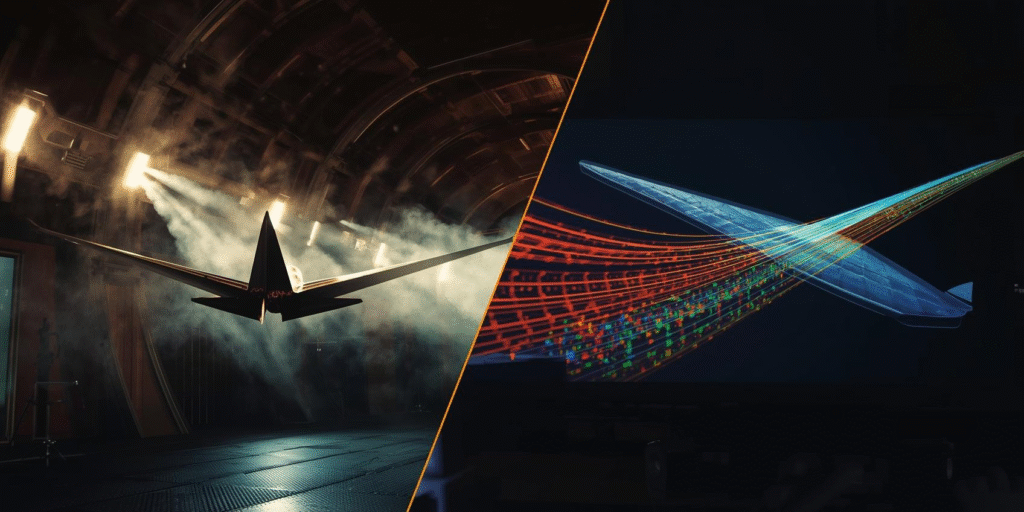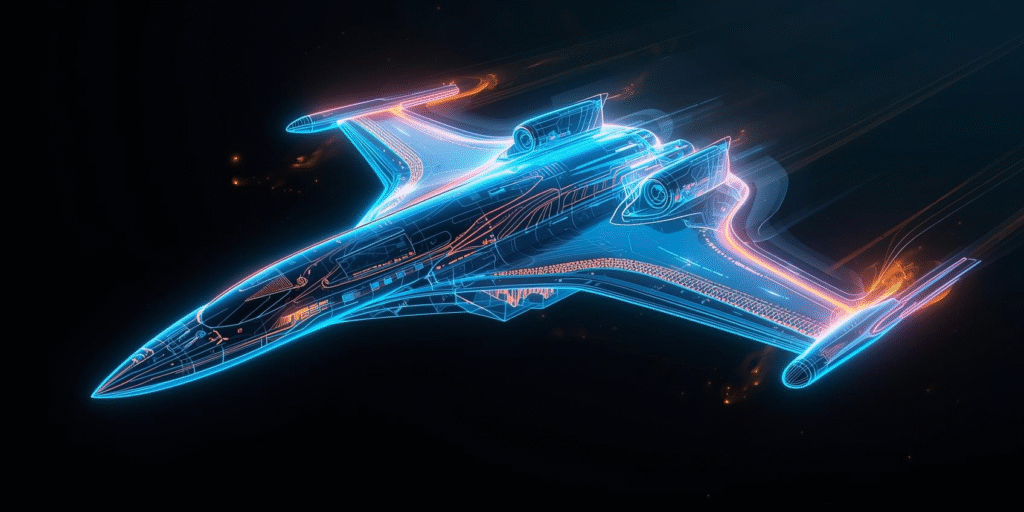How CFD Changed Aerodynamics Forever✈️

Imagine being an aircraft designer in the 1950s. You sketch a wing, build a scale model, and take it to a wind tunnel. Weeks of testing later, you finally know how the air behaves. Fast-forward to today: instead of waiting weeks, you can test hundreds of designs in a single week—without even leaving your computer.
That magic? Computational Fluid Dynamics (CFD).
CFD didn’t just improve aerodynamics—it changed it forever. It turned air from an invisible mystery into a digital playground where engineers could bend, shape, and master it before ever building a prototype.
Pre-CFD Era
Before computers, aerodynamicists had three main tools:
- Equations – Powerful but limited, they worked mostly for simple cases.
- Wind Tunnels – Expensive, time-consuming, and unable to test every possibility.
- Trial and Error – Build, test, fail, repeat.
This meant aircraft design cycles took years, innovation was slow, and creativity was often held back by the sheer cost of “seeing what happens.”
When supercomputers arrived in the late 20th century, engineers began to ask: What if we could simulate the wind?
CFD is essentially that—teaching a computer the laws of fluid motion and asking it to predict how air will flow. Instead of watching smoke trails in a tunnel, we now watch colorful flow fields on a screen.
It started small—simple geometries, rough approximations. But as computing power exploded, CFD grew more accurate, faster, and more trusted. Today, it’s not just a tool—it’s the backbone of aerodynamic design.
How CFD Transformed Aerodynamics
1. Faster Design Cycles
Airbus and Boeing don’t build wings by guesswork anymore. They run thousands of CFD simulations before finalizing a shape. This means designs that once took years now take months.
📌 Fun fact:
The Boeing 787 Dreamliner’s wing was largely perfected using CFD before a single wind tunnel test was done.
2. Formula 1: The Digital Wind Tunnel
In Formula 1, every fraction of a second matters. CFD lets engineers simulate airflow over wings, diffusers, and even helmet shapes.
Teams like Mercedes and Red Bull now rely so heavily on CFD that FIA (the governing body) actually limits CFD hours to keep competition fair!

📌 Fun Fact:
In F1, the car spends more time inside a computer than on the track.
3. Safer and More Efficient Aircraft
CFD doesn’t just make planes faster—it makes them safer and greener.
- Reducing drag → Lower fuel consumption.
- Optimizing airflow → Less turbulence discomfort.
- Simulating failures → Safer designs.
Air travel today is cheaper and more eco-friendly partly because CFD shaved off inefficiencies hidden in airflow.
4. Space Exploration
NASA and SpaceX rely on CFD to test rocket launches, re-entry heating, and even Mars landings.
For example, the Mars Rover parachutes were tested in CFD simulations to predict how thin Martian air would interact with them.

5. The Rise of Drones
CFD didn’t just change traditional aviation—it gave birth to entirely new industries. Drones, eVTOL air taxis, and futuristic concepts like blended-wing bodies wouldn’t be possible without the rapid prototyping power of CFD.
Limitations of CFD (Yes, It’s Not Magic)
As revolutionary as CFD is, it isn’t perfect.
- Computationally Expensive: High-fidelity simulations can eat up millions in computing costs.
- Validation Needed: Engineers still use wind tunnels to confirm results.
- Complex Physics: Simulating turbulence, multiphase flows, or hypersonics remains a challenge.
But here’s the catch: despite limitations, CFD continues to push boundaries as computing grows stronger and AI enters the picture.
The Future: CFD + AI & ML
The next big leap? CFD powered by Artificial Intelligence and Machine Learning.
- AI can predict flow patterns in seconds instead of hours.
- Hybrid CFD + ML models could allow real-time simulations in design studios.
- Imagine testing an aircraft concept in the morning and flying a prototype by evening.
We’re heading towards a future where CFD won’t just simulate the wind—it’ll predict innovation itself.

Fun Facts & Nuggets
- Airplane wings are tested with digital raindrops in CFD to study icing.
- In aerospace labs, engineers sometimes run CFD overnight—then come in the morning to see “digital wind art” across their monitors.
- Some CFD simulations are so massive they take weeks to run, even on supercomputers. Engineers joke: “By the time it finishes, your design might already be old.”
CFD didn’t just speed up aerodynamics—it reshaped it. From cars to planes to rockets to drones, it turned air into something we can design with, not just fight against.
We’ve moved from blowing smoke in tunnels to bending the invisible wind inside computers. The story of CFD is the story of human ingenuity: when faced with the unknown, we found a way to simulate it.
And the journey isn’t over. With AI and quantum computing on the horizon, CFD may soon take us to places where neither wind tunnels nor even Earth’s atmosphere can follow.
